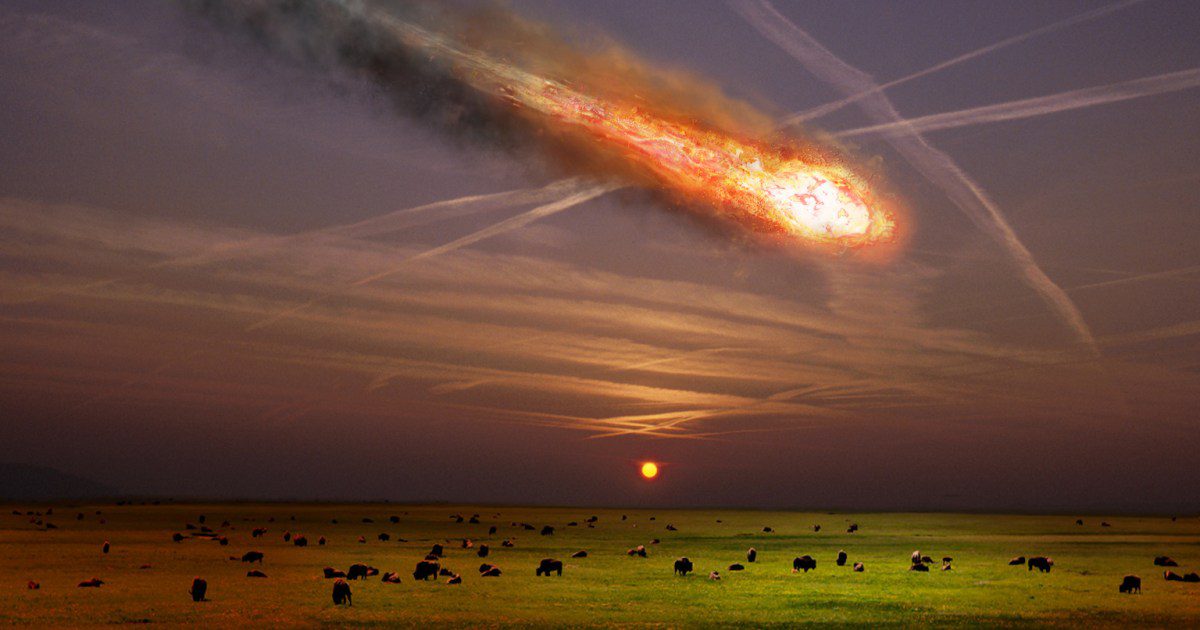
Subscribe to the Starts With a Bang newsletter and stay informed about cosmic discoveries.
Join Dr. Ethan Siegel on an exploration of the universe as he addresses the most pressing cosmic inquiries.
On December 27, 2024, a tiny, swiftly-moving asteroid named 2024 YR4 was detected near Earth. This celestial body measures around 50 meters in diameter, has an estimated mass of 200,000 tons, and made its closest approach to our planet on December 25, 2024. Since its discovery, numerous observatories have tracked YR4’s movement, allowing astronomers to refine its orbit with impressive precision. It orbits the Sun every four years, reaching a maximum distance of around 4.18 astronomical units, placing it at the far edges of the asteroid belt. The next close encounter with Earth will occur on December 17, 2028, and a potentially risky approach may happen four years later, on December 22, 2032.
Current estimates suggest that the asteroid will narrowly miss Earth in 2032, with a distance of approximately 160,000 kilometers—less than half the distance between Earth and the Moon. However, there remains significant uncertainty surrounding this estimation, with a 99.7% confidence interval spanning 1.28 million kilometers, which includes Earth’s path, just around 12,750 kilometers in diameter. Since its discovery, the chance of an impact has increased, moving from an initial 1.2% to 3.1% as of February 18, according to NASA reports.
Does this signify a major threat of collision? Not necessarily. We can anticipate an increase in this probability for some time, followed by a sudden drop to zero. The science behind these projections explains why such fluctuations in impact chances are typical, and outlines the actions humanity might need to take if a catastrophic collision becomes unavoidable.
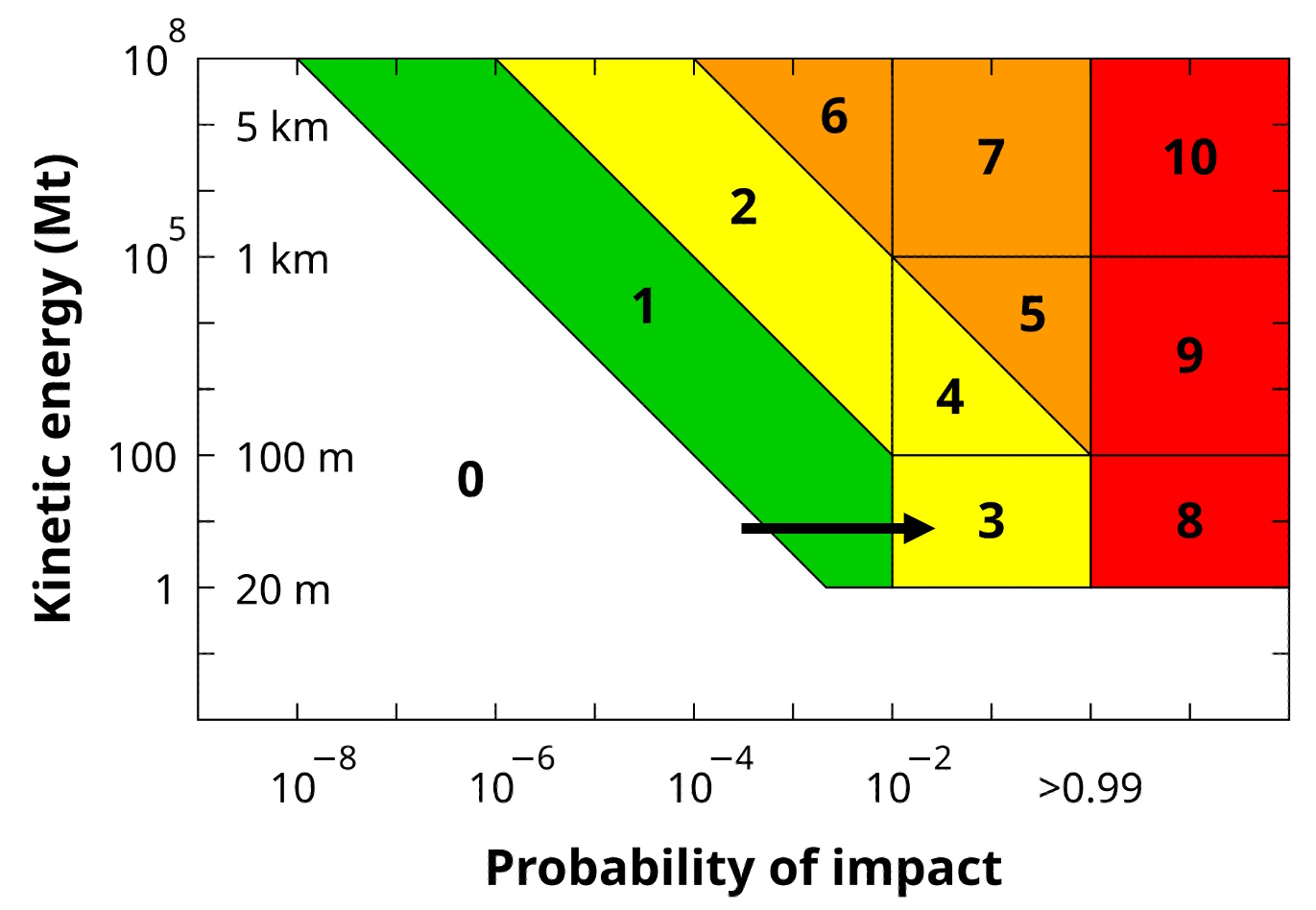
This diagram illustrates the Torino scale, detailing the evolving risk level of potentially hazardous asteroid 2024 YR4 from December 2024 to February 2025. The probability of an impact increases as trajectory uncertainties lessen, but suddenly drops to zero once it is confirmed that the asteroid will not collide with Earth.
The Torino Scale is the measurement system used to assess the potential risks posed by cosmic objects that may impact Earth. The chart categorizes objects with varying degrees of threat; for example, an object that is guaranteed to miss Earth ranks as Level 0. Objects smaller than 20 meters in diameter also fall under Level 0, as even a collision would likely result in minimal damage, akin to the Chelyabinsk meteor event of 2013, which caused only minor injuries.
Larger asteroids indeed pose threats, such as those measuring between 20-100 meters, categorized as “city-killers,” while objects between 100 meters and 1 kilometer fall under the “regional devastation” bracket. Bodies larger than 1 kilometer represent “extinction-level” dangers. Although asteroid YR4 has been the focus of recent media, it currently registers just a “3” on the Torino scale. NASA interprets an asteroid with this rating as follows:
“A close encounter requiring monitoring by astronomers. Current calculations suggest at least a 1% chance of a collision that could cause localized damage. New telescopic observations will likely realign it to Level 0. Public and official attention is warranted for encounters within a decade.”
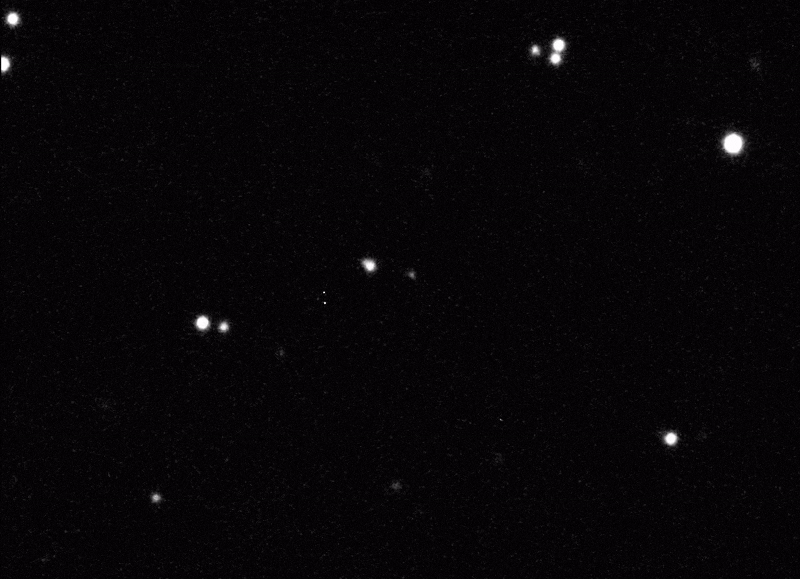
This animation constitutes a compilation of observations from the ESO’s Very Large Telescope in January 2025. The asteroid 2024 YR4 has emerged as the most potentially hazardous object identified in the 21st century thus far.
It is appropriate to regard 2024 YR4 as the most significant threat detected since the establishment of the Torino Scale, yet it is still improbable that it poses a direct danger to Earth. NASA acknowledges this uncertainty; they anticipate that “most likely, new telescopic observations will lead to a reassessment to Level 0.” However, such clarifications often go unreported, and the science behind these assessments is rarely explored in depth. Let’s delve into the methodology used to calculate orbital trajectories and the uncertainties that accompany them.
Initially, when spotting an object through a telescope, several observations can be made:
- Identifying its position in a two-dimensional sky projection.
- Monitoring its motion over time, which allows for the calculation of its trajectory.
- Using established gravitational laws to predict past and future trajectories.
- Incorporating operational uncertainties from measuring devices to forecast future orbital variations.
- Considering the gravitational influences from significant bodies along its projected path, including the Sun and major planets.
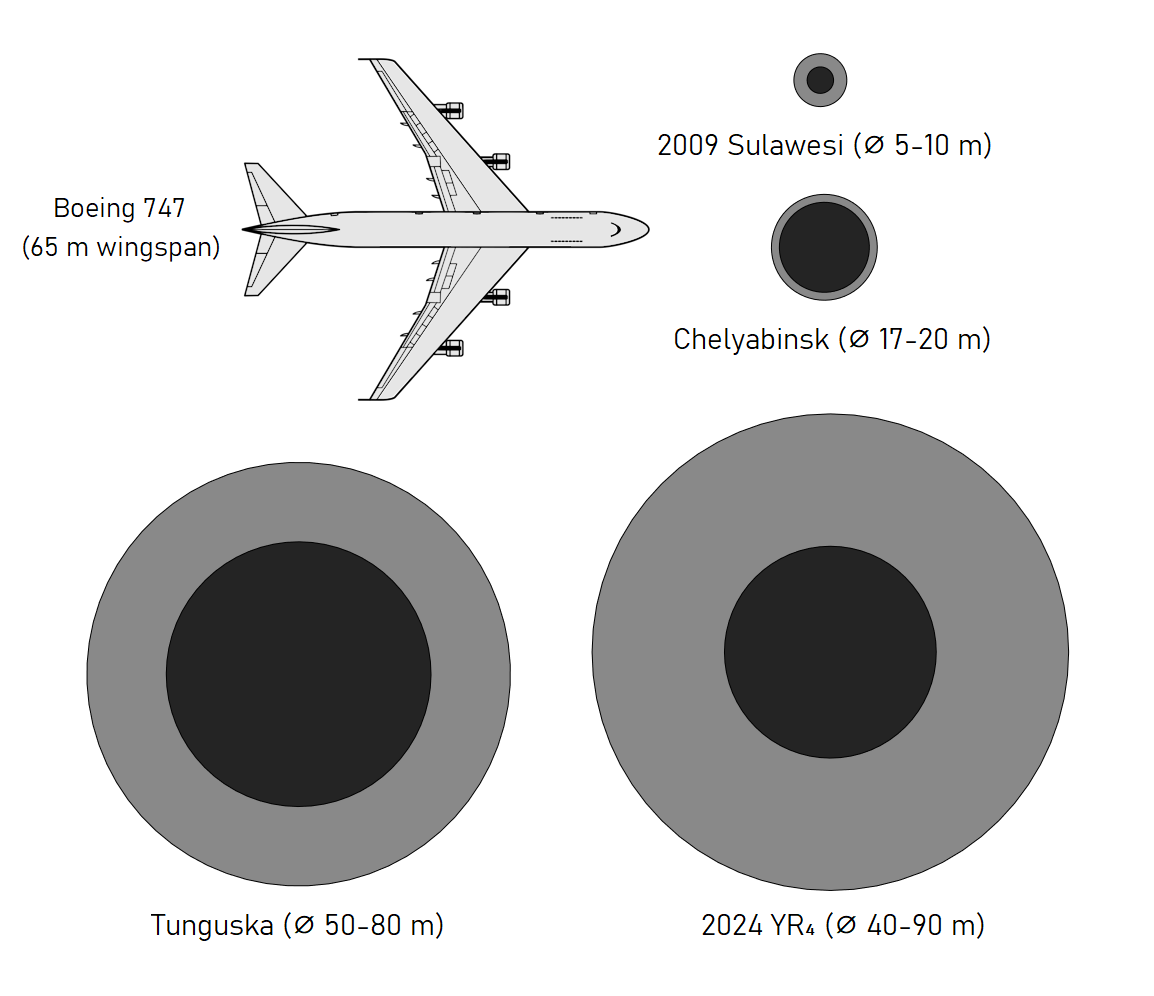
This diagram presents a comparative analysis of sizes, featuring a Boeing 747, the Chelyabinsk impactor, asteroid 2009 Sulawesi, and estimates of the Tunguska impactor and asteroid 2024 YR4. The potential destruction from a collision with 2024 YR4 remains highly uncertain.
As more observations are made—using increasingly advanced equipment, achieving higher precision, and extending the observation period—the uncertainties associated with predicting the object’s future trajectory diminish, thereby enhancing confidence in the predictions. Conversely, when observations are sparse, particularly for a short timeframe or limited portion of its orbit, the uncertainties increase accordingly.
Generally, the optimal observation period is when the object is moving rapidly across the sky—during its closest approach to the Sun. While distant Kuiper Belt objects may necessitate several years of observation for reliable orbit determination, nearer objects in the inner Solar System can yield satisfactory data within weeks or months.
Since 2024 YR4 was identified in late December 2024, following its perihelion on November 22, we currently have only a limited precision regarding its trajectory. Although initial estimations suggest that it will miss Earth by ~160,000 kilometers, the uncertainties remain significant, particularly along one spatial dimension, where the margin of error extends to ±213,811 kilometers.

This illustration highlights the potential courses of asteroid 2024 YR4 concerning Earth’s and the Moon’s orbits, emphasizing the “Uncertainty region.” Presently, the likelihood of the asteroid colliding with Earth stands at 3.1%, and the chances of an interaction with the Moon are approximately 0.3%. Most predictions favor no collision at all.
Consider the implications of this data. The calculations suggest that the best-reconstructed orbital path indicates a miss of approximately 160,000 kilometers—around 12.5 Earth diameters. If we were confident in this trajectory within a precision of ±10,000 km, we would be assured of a miss; it would require an extraordinary outlier event to cause a collision, a scenario deemed extremely unlikely.
However, if our trajectory understanding allowed for a ±40,000 km error margin, we might still think that the object is likely to miss, yet we would seek additional data to affirm this conclusion. In scientific and astronomical terms, achieving that precision (around 3.8-sigma) suggests a 99.98% chance of no collision.
As of the latest data—February 18, 2025—the uncertainty surrounding 2024 YR4 is greater than we would prefer, as its trajectory is currently known within a margin of ±213,811 km. For us to rule out the possibility of an impact entirely, we would require a trajectory determination that is about seven times more precise.
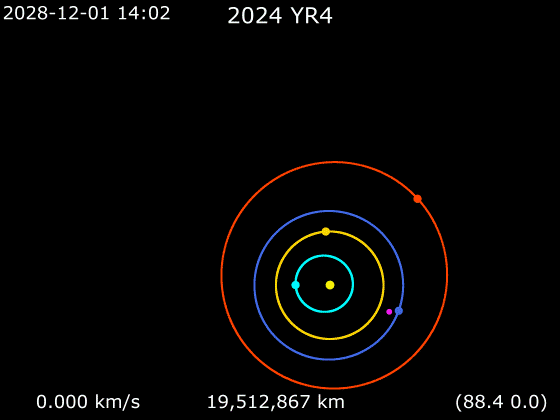
This animation illustrates the trajectories of asteroid 2024 YR4 in relation to the four inner terrestrial planets: Mercury, Venus, Earth, and Mars. Although the asteroid will closely approach Earth in December 2028, it will not collide with our planet, although a possible strike remains relevant for December 22, 2032.
Currently, the situation regarding the accuracy of our data is critical. Statistical uncertainty is often expressed with the “±” symbol followed by a figure. It is essential to ascertain the type of uncertainty being referenced. Recent reports state that the trajectory of 2024 YR4 carries an uncertainty of ±641,435 km, indicating a 3-sigma uncertainty instead of the standard 1-sigma corresponding to ±213,811 km. According to statistical norms:
- There’s about a 68% likelihood that the “true value” falls within 1-sigma of the predicted path.
- A 95% likelihood that it lies within 2-sigma.
- A 99.7% likelihood that it is within 3-sigma.
- A 99.99% likelihood that it falls within 4-sigma.
Given that the most likely path is only 160,000 km from Earth, decreasing uncertainty relative to the trajectory of ±213,811 km implies that:
- The chances of impact may increase as the uncertainty diminishes, ruling out more extreme “miss” scenarios,
- Until the uncertainty is considerably lower than the “most likely value,” leading to an exponential drop in the impact probability
- In turn, better precision in our understanding of its trajectory will yield more robust predictions.

Barringer Crater, also known as Meteor Crater, is located in the Arizona desert and spans over a mile in diameter. This geological formation was caused by a relatively small impactor estimated to have been just 50-100 meters wide, significantly smaller than Dimorphos, which was targeted by NASA’s DART mission. While such “city-killer” objects can be dangerous, the damage they inflict remains localized compared to larger impacts.
This scenario has been observed with nearly every tracked asteroid, and it is highly probable (with over a 96% chance) that this will also hold true for 2024 YR4. The previous record for the highest likelihood of Earth impact was held by asteroid Apophis, initially believed to have a 2.7% chance of collision back in 2004. As more precise observations were undertaken, its potential risk dropped to less than one in a million. Until we achieve similarly accurate measurements for 2024 YR4—which may require using the world’s most advanced telescopes, including the James Webb Space Telescope—we must remain open to the possibility of a potential impact.
This possibility underscores the importance of precise trajectory measurements and analyses of 2024 YR4, which possesses the following uncertainties:
- It could strike Earth or narrowly miss by several hundred thousand kilometers.
- Its size may range from 40 to 90 meters in diameter.
- Its kinetic energy upon impact could be between several hundred kilotons to 15 megatons of TNT.
This last uncertainty, particularly related to the asteroid’s mass—estimated at 220,000 tons with a possible variance of a factor of 10—underscores the significant differences in potential impact outcomes. NASA’s DART and Deep Impact missions demonstrated successful redirection of much smaller objects, weighing just a few hundred kilograms, traveling at speeds around 10 km/s or higher. If we optimistically assume:
- A spacecraft mass of 1000 kg,
- A relative velocity of 20 km/s,
- The asteroid’s projected mass of 2024 YR4 at 2.2 × 108 kg,
- A redirect action scheduled in 2028, four years before the possible impact,
- And a perfect elastic collision between the spacecraft and the asteroid,
We could achieve a velocity change of around 18 centimeters per second for the asteroid. Over four years, this alteration could modify the trajectory of 2024 YR4 by up to 22,000 kilometers—more than the entire diameter of our planet.
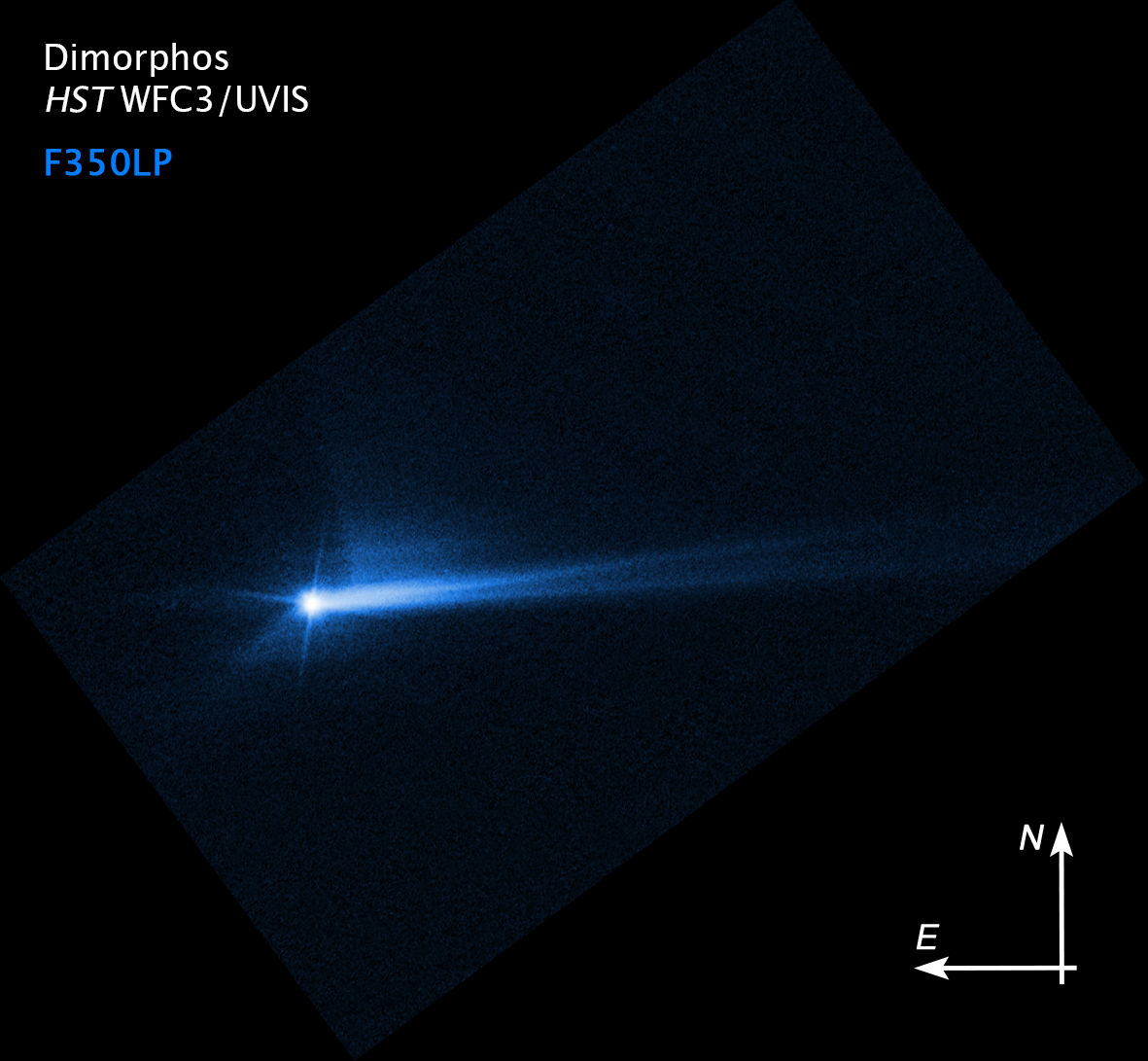
This Hubble Space Telescope image from October 8, 2022, captures debris trailing from the asteroid Dimorphos, shortly after its intentional impact by NASA’s DART spacecraft. The rapidly changing debris tail reflects the significant alteration of Dimorphos’s orbit, which was objectively measured.
Admittedly, there might be risks associated with using an impact strategy for redirection. The asteroid could fragment, resulting in multiple debris trails that may hit Earth. Alternatively, the impactor could embed itself into the asteroid without imparting sufficient momentum for a course correction. Using a nuclear device could lead to dangerous radioactive contamination without achieving a proper deflection. The optimal redirection strategy would involve impacting the asteroid in the correct direction with the necessary velocity and mass, well in advance of the potential impact.
However, it appears unlikely that a redirection mission will be ultimately needed. If trajectory measurements are performed poorly, any object may seem to pose an “impact risk.” Given the fast-paced monitoring of 2024 YR4 combined with its small size, we currently lack a clear understanding of whether a collision is possible. The odds favor a miss, but improved observations—expected in the near future—are needed for confirmation. It is likely that the probabilities of impact will peak around 5% and then sharply decrease. Until we gather essential data, we can only speculate. For humanity’s safety, collecting high-precision information for planetary defense should be our priority now.
Subscribe to the Starts With a Bang newsletter for the latest insights on the universe!
Join Dr. Ethan Siegel as he explores the cosmos and answers your most important questions.









